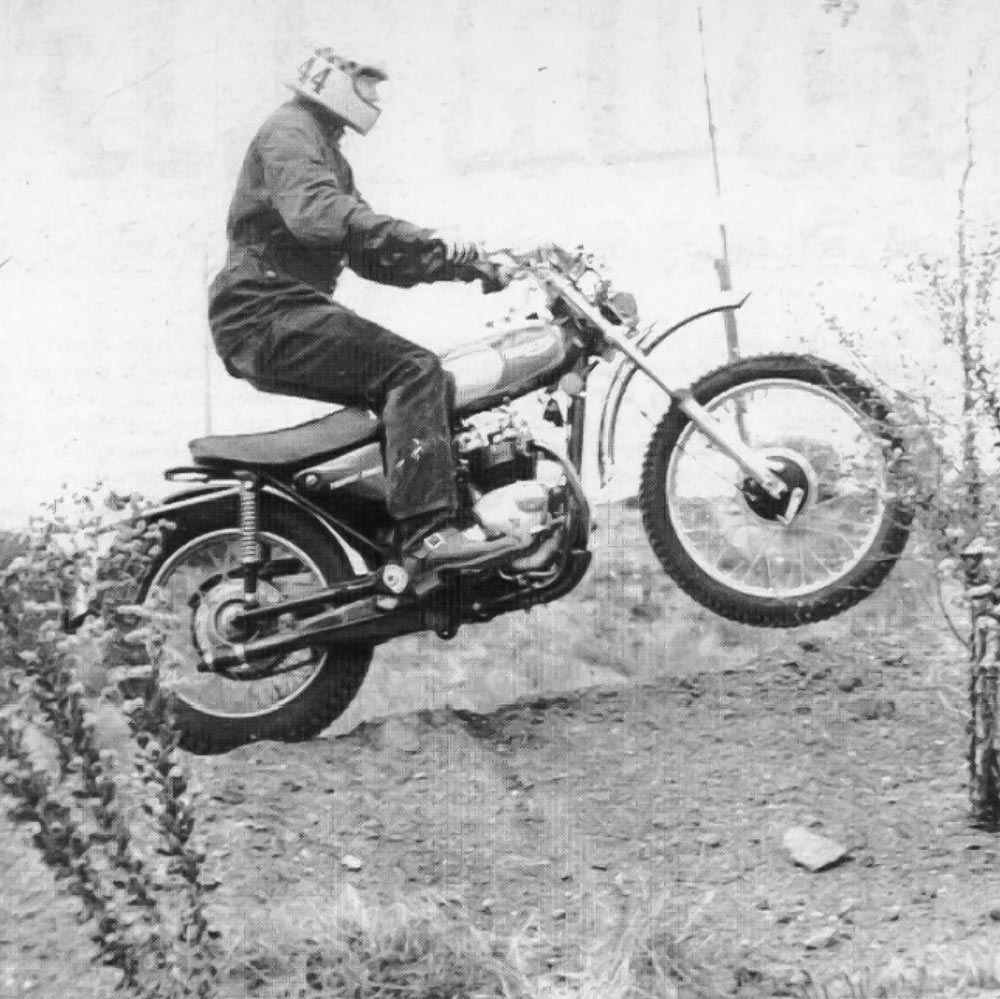Cycle News Archives
COLUMN
The British Are Coming!
By Kent Taylor
Fresh from a week of celebrating a declaration of freedom from British tyranny, it would seem only sporting that we also take time to acknowledge the kindnesses extended to us by our former lien holder. To the same country that brought us The Beatles, Monty Python and Barry Sheene, let’s raise a pint to the Triumph Engineering Co. LTD as we honor them for their contribution to the world of heavyweight four-stroke, twin-cylinder motorcycles which can be ridden both on and off of the road—and they did so decades before the industry coined the phrases “dual sport” and “adventure” for our dirt/street play bikes.

Imagine the classic John Landis’ movie “An American Werewolf In London,” where the locals at The Slaughtered Lamb Pub warned the hiking lads from America to “keep to the roads…stay away from the moors.” Now, picture if the fellows had ridden to the pub on a 1973 Triumph Trophy Trail, the motorcycle that Cycle News put to the test in its December 18th, 1973, issue. With its big powerplant and chrome fenders, the Trophy Trail (known also as the TR5T) was a sight to behold, a unique blend of style and ruggedness.
But Triumph really didn’t need a huckster to pitch the Trophy Trail as an off-road beast of burden. A full page in Cycle News reminded everyone that the British team, all aboard TR5Ts, had just netted second place in the ISDT that year. They said they were a flat tire away from winning the whole bloody shooting match!
The heart of the Triumph was its lusty-sounding 499cc four-stroke twin-cylinder engine, with a single carburetor providing the fuel/air mixture. While adding another carb might’ve provided more top-end punch, the solo Amal was easier to tune and plenty effective on the low end. Besides, the editor stated, “…you don’t need the [extra] horsepower.”
Mellow would be a fine adjective to describe the power delivery of the TR5T. Peaking at 7550 rpm, Cycle News liked the smooth powerband and positive throttle response and could cruise around at 70 mph all day long, netting 50 miles of fun per gallon of petroleum. A two-into-one exhaust, painted flat black, delivered a throaty note, but at a level still acceptable for the “less sound, more ground” advocates of the 1970s. The test rider’s only complaint was lodged against the transmission, where the long throw of the gearshift lever was out of step with the quick snick found with the Japanese gearboxes of the era.

All the power in the British Empire is worth nothing if it can’t find its way to the ground in a friendly fashion. Thanks to their frame geometry, Triumphs were known for their superb handling characteristics, and the Trophy Trail honored that reputation. CN listed its weight as “about 355 pounds,” which seemed high at the time, especially for a bike that was supposed to be equally at home on the road or in the moors. We misnamed these bikes “enduro” machines at the time, and out of the box, it would be a challenge to get them to meet the demands laid out by both twisting asphalt roads and bumpy, hilly dirt trails. The Trail Trophy was certainly hampered by minimal suspension travel and a weak front brake, but fireroads and casual uphill climbs, the Triumph was as surefooted as they come. A big, comfy saddle was a stock item—no need for an aftermarket seat! Dirt-oriented handlebars were of an acceptable bend for street use.

There were some of the standard gripes about this Triumph. If there was such a thing as cut and paste in 1973, magazines could’ve infinitely re-used the phrase “lighting was only average,” and a standard cursing of Lucas electrics (known as the “Prince of Darkness” by British bike enthusiasts) would have been embossed into the pages. New USA regulations mandated all road-going motorcycles would be equipped with turn signals, and those, too, gave the CN riders occasional grief. Unlike other British bikes, the Triumph leaked no motor oil—just a little weep from a fork seal. A broken tachometer cable was the only breakdown during the 390-mile test.
In 2024, nearly every motorcycle manufacturer has a dual sport or adventure bike in their lineup, many 1000cc and bigger. In 1973, most companies offered up nothing beefier than a two-stroke single, with those boasting no more than 400cc. They replaced the desert sleds of the 1950s and ’60s, so the concept of stepping back in time and hitting the trails with anything bigger than, say, something like a Suzuki TS 400 was a hard sell. The Triumph Trophy Trail was a lone wolf, but it was one that seemed to be as well-suited to the road as it was to the moors. CN
Click here to read the Archives Column in the Cycle News Digital Edition Magazine.
Subscribe to nearly 50 years of Cycle News Archive issues
